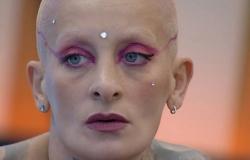PHotoEspaña celebrates Perpetuum mobile, under the direction of María Santoyo. The central axis of this edition will be the dynamism of the photographic medium and the representation of movement. It will be held between May 10 and September 29 and will feature 84 exhibitions and the participation of 293 visual artists.
The PhotoEspaña 2024 edition is titled Perpetuum mobile, a term that refers to fast-time musical pieces, to a continuous succession of notes; but it also defines a dream of modernity: the invention of a utopian machine, which was never realized. It was an autonomous device with inexhaustible energy that would last forever. This dream coincided with another that did materialize, which was the camera.
“It is curious that they dreamed of a machine capable of eternally prolonging time and movement and at the same time having a machine capable of stopping it and capturing it on a medium, which was the photographic fact,” María Santoyo, director of the festival, tells us.
QUESTION.- Photography is close to turning 200 years old, it seems that it has been the contemporary invention most faithful to social mutations…
ANSWER.- And also the artistic practice that has been most welcomed and adopted by such a large and global majority. It seems a paradox that these two machines were dreaming at the same time. I would almost say that in our time they have merged, hence the edition is called Perpetuum mobile. For me, It is a metaphor for photography, that machine of perpetual energy, It responds in a certain sense to the festival itself and its vocation for durability. But it also converges with a dream that photography wanted to reproduce from the first moment, which was the representation of movement.
perpetual motion
Q.- Photography also sought from its origins the intention of decomposing movement to understand it…
A.- And it seems to me that, in photography from those early times to the present, there is also a convergence of a movement that is capable of transcending the image. In that sense, Photography today is that machine of perpetual motion and it is that utopia that we want to present from different proposals. This edition celebrates the movement of the medium itself, the photography of movements, gender, civil, historical and those of the photographers themselves in the exercise of their profession.
Q.- What will we see in the festival’s homonymous exhibition?
A.- Qerpetuum mobile presented at the Círculo de Bellas Artes and is made in complicity with Alejandro Castellote, first artistic director of the festival and director of the photography department of the Círculo de Bellas Artes. The exhibition includes the work of 27 Spanish photographers, born in democracy and trained in the analog-digital paradigm shift, established in the first decades of the 21st century. It is a great collective exhibition.
Q.- This year the festival has regained its alliance with National Heritage. What projects will they present?
A.- Its titled Field Notebooks, The intention is to promote the Royal Sites of Spain and make known what has allowed its conservation and sustainable exploitation throughout history. It is a project that wants to focus on nature, on its need for preservation, but also to highlight that space where wild nature meets the intelligence of man. In this first edition, Javier Vallhonrat will be the one who addresses the hydraulic devices of the Royal Factory of San Ildefonso, which celebrates 300 years of its creation. The three-year project will present three field notebooks, worked on by different artists.
Q.- Several retrospectives are expected, those of Erwin Olaf, Boris Savelev, Bárbara Brändli, among others…
A.- Yes, there are three major retrospectives that we will present in collaboration with the Madrid City Council. That of Erwin Olaf will be the first major exhibition after his death and can be seen at the Fernán Gómez. Boris Savelev’s will be an unpublished retrospective, which shows his work documenting the historical transition of the dismantling of the Soviet Union. Saraf is also one of the great colorists in the history of photography, which can be seen at Espacio Cultural Serrería Belga. Barbara’s work Brändli, of Swiss origin and based in Venezuela, is best known for the book Nervous system, but she is one of the great photographers based in Latin America. The exhibition has been curated by Alejandro León Cannock, in collaboration with the Caracas Coffee Foundation, which maintains its archive.
Japan and Puccini
Q.- Ravens Masahisa Fukase’s legendary work is presented for the first time in Madrid. What other exhibitions would you like to highlight?
A.- Ravens, is considered the best photobook in the history of Japan. Kukase’s work will be exhibited in the Minerva Room of the Círculo de Bellas Artes. International artists we will also see the Americans Elliot Erwitt and Consuelo Kanaga. Kanaga’s work is less known, I had the opportunity to see it at the KBe in Barcelona and it is an honor to be able to present it at the festival. At ICO will be Iwan Baan, a Dutch photographer specialized in architectural photography, and it will be a great retrospective. This year Santander has expanded its exhibitions thanks to several institutions. Between these Trigger/Sequence from the Helga de Alvear Collection, will be presented at the Central Library of Cantabria.
Q.- It has been a surprise to see photographic work by the composer Giacomo Puccini within the program…
A.- The exhibition is titled Puccini photographer and can be seen at the Teatro Real. The composer is not associated with photography, but he was a great amateur. It is an installation proposal with a very curious archive, with great panoramic views. Puccini was fond of the “ambrotype” technique, used in the late 19th and early 20th centuries. He discovered this discipline in 1894, when its practice proliferated among enthusiastic amateurs, currently adding a key piece to the knowledge about his figure.
Q.- This year there is an evident interest in including proposals in various cultural spaces…
A.- Because we want to experiment with spaces. At the Residencia de Señoritas we will present an exhibition in tribute to Lili Álvarez, the first Spanish woman to participate in the Paris Olympic Games in 1924. It will also be a tribute to commemorate the centenary of Spanish women’s Olympics, with photographs showing the pioneers of the sport. The work will be exhibited at the National Museum of Decorative Arts Living room and bedroom album by David Trullo and in the Museum of Romanticism, The Daughters of Minerva by Laura San Segundo and Alejandría Cinque. At the Lázaro Galdiano we will see the work of Lúa Ribeira, one of the youngest members recently incorporated into the Magnum Agency. Her project Agony in the garden is inspired by his interest in music trap and the drill.
Artificial intelligence
Q.- What space will be given to new technologies?
A.- Sofía Crespo, who works with AI, will be at the National Museum of Altamira. His proposal in the Neo Cave attempts to put the most primitive form of visual manifestation into dialogue with the latest forms of technological experimentation. We will also present three meetings that aim to reflect on the impact of AI and other technologies in the field of visual arts.
Q.- Following in the wake of ARCO, this year a collective of photographers from the Caribbean region participates in the festival…
A.- We have joined the UNESCO initiative through its program Transculturewhich aims to offer visibility and international mobility to artists and creators from the Caribbean region. We have selected 15 countries such as Cuba, Dominican Republic, Bermuda, Bahamas, among others. We like the idea of generating exchanges to strengthen ties with other artists from different regions. We have also created an alliance with PhotosSeptember of Mexico, where we will present three exhibitions in the context of this biennial. For the festival, in addition to celebrating photography with exhibitions and calls, it is very important to generate educational projects with future generations in mind. It is necessary for the public to begin to acquire skills to reinterpret them and awaken critical thinking.





